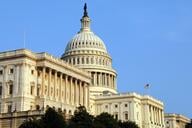You have /5 articles left.
Sign up for a free account or log in.
The litigation challenging the admission policies of Harvard College as discriminating against Asian Americans has concluded its trial court phase, with the college prevailing. The case will now proceed to the Court of Appeals in Boston, and the losing party there will almost certainly ask the Supreme Court to review that decision or the similar case now pending against the University of North Carolina.
At least as important as the legal issues in the case are the vast amounts of previously undisclosed information about how the admission process works at Harvard College, what kinds of preferences are granted and how they impact the composition of the entering class. The Harvard decision is fascinating because of the vast amount of information that it contains bearing on vital questions of admissions policies as well as issues of law. That information did not become public because Harvard willingly offered it up to further the debates around preferences for minorities, as well as athletes and legacies, but because the very time-consuming and expensive litigation process required it to do so.
Harvard may be unique in the level of interest that its preferences attract, but every institution of higher education is struggling with the same kinds of policy questions, and yet none of them is volunteering to provide the most basic information about its own preferences so that a meaningful discussion about them can take place. A look at the factual findings in the 130-page ruling is a road map for what every responsible institution should be sure that it has and that it makes public, without having to be sued.
What the law allows colleges to do in the area of affirmative action should be secondary to the very important policy question of how much additional admissions help there should be for underrepresented minority students, as well as for others, such as athletes, legacies and students from low-income families who are often the first to attend any college. In order to have a meaningful debate on that subject, the relevant information must be available to those who wish to be heard and to those who have the authority to decide where the proper balance should be struck -- and why.
The ruling in the Harvard challenge contains a wealth of relevant information about Harvard’s admission process and outcomes that was not publicly known before this case was filed. That information should surely inform a continued debate on this topic at Harvard, and perhaps even more important, that now public information should push other colleges to make comparable data available to all their interested stakeholders.
Just as war is too important to be left to the generals, the extent and structure of admission preferences programs must not be left to a college’s admissions office. Once legal requirements have been satisfied, what remains are major policy choices that require a fully informed and meaningful discussion at the highest level of each institution, and it is by no means clear that the facts found by the court in the Harvard decision were fully available to those responsible for approving the policy choices at Harvard, and they are almost certainly not available for most other colleges and universities. Here are some of the questions that each college should ask in light of what we learned from the Harvard litigation.
Does the college have an affirmative action program? If so, has it been carefully considered by the highest level of the institution? Is it spelled out in writing and made known to all concerned?
Harvard has given considerable and regular attention to its long-standing affirmative action policy, with the dean of Harvard College chairing a 2015 committee that reaffirmed the policy after this lawsuit was filed. The policy is under regular review, and, in 2018 while the case was pending, the admissions office was advised in writing “to explicitly instruct admissions officers that they ‘should not take an applicant’s race or ethnicity into account in making any of the ratings other than the overall rating’ and that for the overall rating ‘the consideration of race or ethnicity may be considered only as one factor among many.’” Other than through the trial record, it is not clear whether this policy (and any other information about it) is in a publicly available writing.
Does the college give other specific preferences, such as to recruited athletes, relatives of alumni, applicants of special interest to the dean and children of faculty and staff, and if so, are those policies in writing and made known to all concerned?
Harvard College provides a substantial admissions preference for what it calls "ALDCs": recruited athletes, legacies, applicants on a special list of the dean of the college or director of admission, and children of faculty and staff. Recent ALDCs comprised only about 5 percent of the applicant pool, but constituted about 30 percent of the entering class. The opinion does not contain any details of a specific policy, whether in writing or not, but there is little doubt that the preference has been approved at an appropriate level, although the opinion does not contain any specific statement comparable to that for race. It is also uncertain whether the policy, including who benefited from it and how much, was generally known before this case.
What does the admission process look like, and at what level are admission decisions made that implement any preferential admissions policies?
The admission process for Harvard College is extraordinarily thorough and appears to make every effort to follow its established ground rules. There are approximately 70 employees in the admissions office, headed by a dean who has held that position since 1986. There are detailed handbooks for both the staff and the Harvard alumni who interview most applicants. Applicants are assessed according to defined matrices, and applications are reviewed by multiple individuals, with admissions offered based on majority votes of the 40-person committee. While concluding that there was no evidence of bias among the admissions officers, the court recognized the possibility that bias might come in through the biases (probably implicit) of an applicant’s recommender, over whom the college had no control.
Does the institution have the data and the ability to gather basic statistics that enables it to understand the impact of any preferential policies?
In addition to the application, the basic data on each applicant are made available to the Harvard committee in electronic form, and they have been collected in a manner that allowed the court to have before it “applicant-by-applicant admissions data for more than 150,000 domestic applicants to Harvard’s classes of 2014 through 2019, as well as aggregate information for the classes of 2000 through 2017.” The college also made available for trial the data on the racial makeup of admitted students from 1980 to 2019. This data appear to be available and used regularly at various steps in the admissions process, without having to undertake the kind of advanced statistical analysis done for the trial in this case.
What has the impact of each preferential policy been over the last few years?
Harvard College receives about 35,000 applications annually, with about 2,000 acceptances for a class of 1,600. Of those applicants, approximately 2,700 have perfect verbal SAT scores, 3,400 are perfect in math and 8,000 have 4.0 grade point averages. The admissions process narrows the pool to those considered to be the most desirable in terms of meeting the goals set forth in the college’s mission statement, as described by the court this way:
“to educate the citizens and citizen-leaders for our society” … “through … the transformative power of a liberal arts and sciences education.” In aid of realizing its mission, Harvard values and pursues many kinds of diversity within its classes, including different academic interests, belief systems, political views, geographic origins, family circumstances, and racial identities.
And because applicants of different races accept Harvard’s offers at different rates, race continues to be a factor in the final stages of the process.
As part of its admission process, the court found that “Harvard evaluates the likely racial composition of its class and provides tips [preferences] to applicants to help it achieve a diverse class. Those tips are necessary to achieve a diverse class given the relative paucity of minority applicants that would be admitted without such a tip. In trying to assure a diverse class, when reviewing an individual applicant, the admissions officers consider various qualitative and numerical indicators of diversity, including the racial composition of the group of students who are expected to be admitted.”
The court then assessed the impact of these tips and found that “race is a determinative tip for approximately 45 percent of all admitted African American and Hispanic applicants” and that “more than one third of the admitted Hispanics and more than half of the admitted African Americans would most likely not be admitted in the absence of Harvard’s race-conscious admissions process.” The court further translated that impact to conclude that, without these tips, “the African American representation at Harvard [would] decline from approximately 14 percent to 6 percent of the student population and Hispanic representation [would] decline from 14 percent to 9 percent,” resulting in 1,000 fewer of those minorities at the college after four years.
Did the college consider race-neutral alternatives to achieve its desired diversity goals, and if so, what conclusions did it draw?
Harvard has considered a number of alternatives to race-based preferences as an alternative to its current system and rejected them all, either because they would not achieve the desired diversity goal or would do so in a way that would adversely impact various other goals that the college sought to achieve through its admission preferences. Those options include eliminating early action, increasing recruiting efforts and augmenting financial aid, admitting more transfers, creating place-based quotas, and admitting more economically disadvantaged applicants. Harvard also rejected the elimination of some or all of the ALDC preferences, and on that option the court observed “that reasonable minds can differ on the importance of college athletics, alumni relations, and admitting the children of faculty and staff, but [it] takes no position on these issues other than to note that these are topics best left to schools to figure out for themselves.”
In the concluding portion of its opinion, the court quoted from the opinion of Justice Anthony Kennedy in Fisher v. University of Texas at Austin, which every college should keep in mind:
The university now has at its disposal valuable data about the manner in which different approaches to admissions may foster diversity or instead dilute it. The university must continue to use this data to scrutinize the fairness of its admissions program; to assess whether changing demographics have undermined the need for a race-conscious policy; and to identify the effects, both positive and negative, of the affirmative-action measures it deems necessary.
The court’s affirmance of the university’s admissions policy today does not necessarily mean the university may rely on that same policy without refinement. It is the university’s ongoing obligation to engage in constant deliberation and continued reflection regarding its admissions policies.
The trial court’s decision in the Harvard admission case is not the last word on the legal or policy issues surrounding preferences of all kinds. But it should make it clear that all higher educational institutions have an obligation to gather the relevant facts about the impact of their existing policies so that responsible officials can make the kind of informed judgments that are required no matter what the decision may be -- and then to make the policy choices public for all to debate.




